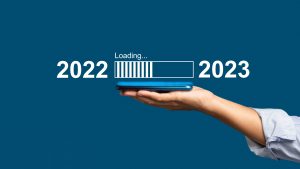Throughout your usage of the software, you engaged with various teams, such as sales and product development. Despite this, every time you sought assistance, you felt that all parties were in sync.
They were aware of your identity, software usage, and previous issues encountered. You discovered that this level of customer service was not accidental. The organization had implemented a sophisticated customer success workflow that optimized and standardized all customer interactions.
This involved monitoring your engagements with different teams and providing transparency of your information to enable a consistent, high-quality experience for customers.
Defining a Perfect Customer Success Workflow
A customer success workflow is an essential tool for managing customer interactions and ensuring consistent service delivery. It helps assign tasks to CSMs based on various factors such as skills, experience, communication skills, and empathy, promoting efficient collaboration and time management with the goal of delivering customer outcomes.
In an ideal world, a perfect customer success workflow would include-
- List of responsibilities and tasks divided by project, customer, and CSM,
- The correct internal and external stakeholders for each project and task, and a
- Complete list of customers with optional projects for each of them. Additionally, it
- Should facilitate alignment and collaboration toward customer outcomes,
- Have multiple data sets and tools integrated into the workflow, and
- Offers productivity boosters such as tags, subtasks, dependencies, milestones, charts, and more.
Creating a Customer Success Workflow
Standardize your Process
A reliable CS workflow is critical to providing a consistent and efficient customer experience. Creating a shared playbook of best practices using technology is a great way to achieve this. It not only keeps the team on the same page but also serves as a reference for any new or complex situations.
The playbook should include plans for welcoming new customers, strategies for increasing usage, guidelines for regaining lost customers, and procedures for handling escalated situations. This helps to ensure that customer service is repeatable and scalable, setting the groundwork for a positive and lasting customer experience.Gain insight into the voice of the customer
By implementing a Voice of the Customer program, you can gain valuable insights from your top clients that can help you focus your efforts and make necessary improvements.Here are some tips on how to use customer feedback to enhance your customer success workflows: Organize customer feedback by the customer, groups of customers, or CSMs, depending on what works best for your business. Assign tasks to CSMs to address recurring issues before they become reasons for customers to leave. Prioritize tasks and accounts based on the likelihood of churn, account size, and customer outcomes and goals.Always make sure to respond to relevant customer feedback and inform those customers when their feedback leads to product updates, new features, or other improvements.
Assign CS responsibility across the team members
Typically there are 6 core responsibilities that a Customer Success Manager needs to master. The CS team needs to cover all the bases. This means distributing tasks to the most qualified team members who can handle them.
Here are some specific tasks that require special attention in order to create a successful CS workflow:
- Onboarding: This stage includes sending the initial welcome message, setting up a kick-off meeting, establishing clear goals and objectives, and understanding the customer’s desired outcomes.
- Success planning: This stage involves setting goals, reviewing account overviews, mapping out the customer journey, and conducting strategy reviews.
- Driving product adoption: To ensure customers are making the most out of your product, it’s important to offer coaching and training, send tutorials, and provide best practices, and useful templates.
- Monitoring: Keep track of product usage, conduct sentiment analysis, assess risk, and take proactive measures to address any potential issues.
- Retention efforts: It’s essential to set up renewal notifications, plan budgets, follow up with customers, and create win-loss analyses.
- Upsell/cross-sell: Periodically review accounts, conduct ROI analysis, set new goals, and align opportunities for upselling and cross-selling.
Remember, the onboarding stage is the most critical part of the workflow. Once this stage is optimized, everything else should fall into place more quickly and with less stress.
4. Automate mundane tasks wherever & whenever possible
Repetitive manual work can hinder productivity for Customer Success Managers. However, there is a straightforward solution to this issue: automating tasks with playbooks. Playbooks are automated workflows that can cater to various types of customers and their specific needs.
Automating tasks not only saves time and boosts productivity but also ensures that customers receive prompt and consistent service. Additionally, it allows CSMs to focus on more complex tasks that require human input and strategic thinking.
Some types of automated playbooks include proactive reach-out playbooks that address common issues, onboarding playbooks that provide necessary materials and tutorials, and churn monitoring playbooks that alert the team to potential issues before customers decide to leave.
5. Effective collaboration with multiple teams
The success of a customer is not only the responsibility of the customer success team. It may sound surprising, given the common belief, but customer success is actually a company-wide effort that requires collaboration from multiple teams. Here are some examples of the teams involved in customer success:
Sales: The alignment between customer success and sales is crucial and has been discussed extensively in our guides and webinars.
Product: The collaboration between customer success and product teams is measured by the speed with which customer feedback can be translated into product updates. This is critical as it can impact customer retention.
Financial: Apart from processing payments and handling account-related tasks, finance teams, especially the CFO, must understand the value and importance of customer success.
Account: Some companies merge account management with customer success. Either way, the person in charge of the account should work closely with CSMs.
Marketing: Marketing also needs to align with customer success regarding product features and customer needs, concerns, and goals.
It’s important to include all these stakeholders in your customer success workflows and assign them specific tasks. If a task requires input from external stakeholders, such as a sales report, make sure to add them to the task. Don’t just name-drop, but involve them in the process to ensure that customer success is a company-wide effort.
6. Using data to segment customers
By analyzing and segmenting customer data, you can create targeted customer groups and tailor your messaging to specific needs and behaviors. This approach, known as “slicing and dicing,” can help your customer success team provide valuable and relevant interactions with customers at the appropriate time.
By grouping customers based on common characteristics or behaviors, you can develop personalized strategies and offer proactive support to ensure their success.
This method can also help you identify at-risk customers early on and take steps to prevent churn. Read here for churn analysis methods used by leading B2B SaaS. Read 8 ways to segment your customer data
Customer Success Workflows Every Customer Succes Team Should Implement
Here are some examples of customer success playbooks that can help your team with automation and prevent any confusion regarding workflows:
High Touch Customer Onboarding Playbook:
The playbook starts with a CRM trigger when a new sale closes, followed by sending a welcome email to the customer. Then, a calendar event is created and an invite is sent for an onboarding meeting. After the meeting, an onboarding follow-up is sent along with product guides and tutorials. A calendar event is created, and invites are sent for an implementation meeting. Tasks for account setup dependencies are created, and a notification is sent to the CSM if product adoption fails. If product adoption is complete, the customer is moved to the Growth flow.
Customer Growth Playbook:
This playbook starts with the completion of the onboarding playbook and product adoption. If customer has an issue in the product, a how-to is sent. If the customer issues persist, the CSM is alerted on Slack. If feature use increases dramatically, the CSM is notified. If the customer accesses a new feature demo, they are added to the upsell list, and the CSM is alerted. If the account is reaching the renewal date, the renewal playbook is triggered.
Account Renewal Playbook:
The playbook is triggered by the customer success team and starts when an account is reaching the renewal date. Feature usage is reviewed, and if the customer qualifies for an upsell, they are added to the upsell list, and the CSM is alerted. The credit card expiration date is checked, and if it has expired or is expiring soon, the customer and CSM are notified. An account updater is run (optional), and the subscription is renewed. Payment history is checked, and if payment failed, a dunning email is sent to the customer, and the CSM is alerted.
While these playbooks are useful, they are high-level overviews of what a playbook should be. The real flow will vary based on your business and customers.
Know more about playbooks here.
Using Software to Improve Customer Success Workflows
To optimize your customized workflows, grant your team access to a customer success platform equipped with all the necessary tools. With customer success software, customer data can be accessed from a single location and made available to all employees in your company.
The software should serve as an early warning system and provide a framework for making informed decisions regarding how to handle customers.
Your team should be able to establish goals and track progress to demonstrate the tangible outcomes of their efforts. By working together, these factors will ensure a top-tier customer experience from start to finish.









